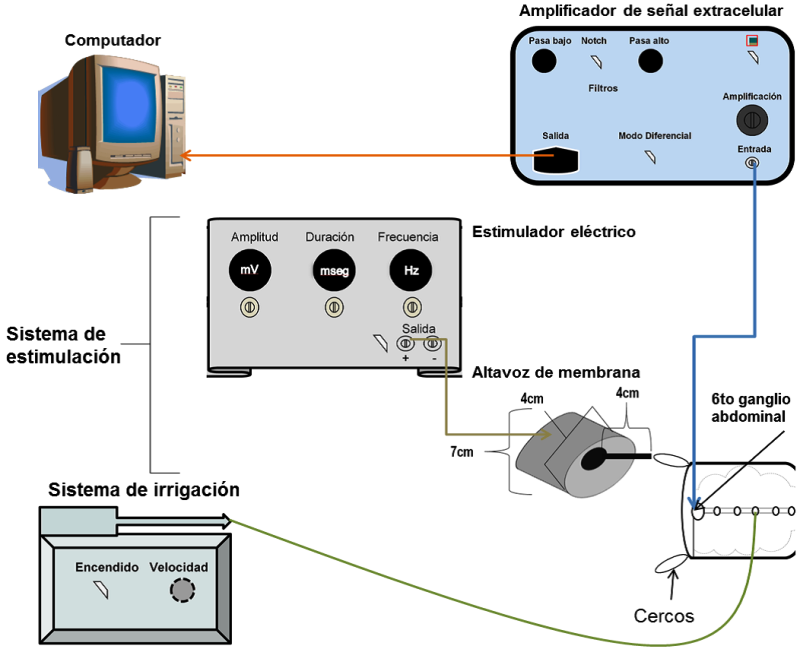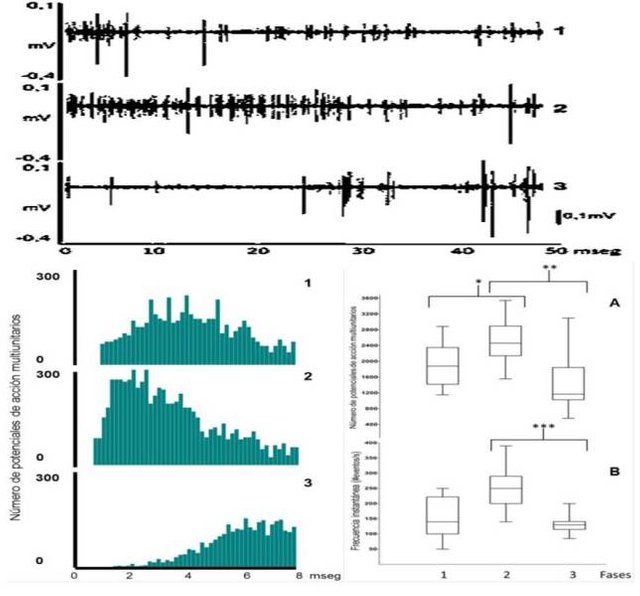Biology and neurophysiology of Blaberus discoidalis 101: electrophysiological data acquisition and analysis using an invertebrate model.
Neurosciences and behavior laboratory of the Universidad de Carabobo, Venezuela.
I proposed Blaberus discoidalis as an experimental model in toxicological studies. Adult individuals of this species are approximately 35-45 mm long and have a dark brown color with a black patch on their pronotum, have membranous wings, but are not active fliers and they´re found mainly in caves and roosts. In general, knowledge about this species is associated with behavior and locomotion studies, with little or no information about its central nervous systems activity under certain ionic concentrations and stimulation. In Venezuela, they are a common organism in a large number of ecosystems, even considering it a plague in urban and rural regions, making it a relatively easy model to acquire and maintain.
To generate a controlled mechanical stimulus on the cockroach´s cerci we made a system which consisted of a 4cm high by 4cm wide and 7cm wide speaker connected to an electric stimulator with a stick attached to it and the stimuli were aimed at the left cerci of each individual in each phase of the recordings. For the extracellular recording of the spontaneous activity of the neuronal ganglion of Blaberus discoidalis, a differential electrode was used, which consisted of a pair of stainless steel needles separated at a distance of approximately 1mm from each other, placing one in the 6th neuronal ganglion and a second electrode to ground. Both electrodes were connected via copper cables to an extracellular signal amplifier model 3000 AM System Inc.

The solutions used were irrigated to the nervous system of each individual by means of a 10mL syringe adjusted in an infusion pump. The obtained signal fed the sound card of a desktop computer; it was visualized using the Oscilloscope USB v5.1.1.Ink program. Data was acquired using a recording software at 32 kHz, with 100X gain and the high and low pass at 3kHz and 0.1Hz, respectively.
All recordings had a total duration of 15 minutes and were separated into 3 phases of 5 minutes with the following characteristics:
- Phase 1: The spontaneous activity of the last abdominal ganglion was recorded, irrigated with 5mL of Ringer's solution at 1mL / min.
- Phase 2: Neuronal activity was recorded under mechanical stimulus treatment at the cercal level using the speakerbox with the stimulation characteristics previously described, applying 5 mL of Ringer's solution.
- Phase 3: The effect of 5mL of Ringer's solution with lidocaine at a final concentration of 6mM and under the mechanical stimulation previously described in phase 2.
Data analysis and results
Using a Threshold-based software sorting tool to separate the biological signal from the background noises. The matrices with the aforementioned parameters were analyzed with the free program Past v2.17c and the effect of the mechanical stimulation of the frame was compared with respect to the basal activity of the nervous system and the activity registered between the application of Ringer's solution with 6mM lidocaine. With respect to the phase of mechanical stimulation of the cerci using the Wilcoxon test based on the number of average multiunit potentials and the average instantaneous frequency.

Above you can see the analysis software´s output with the typical electrophysiological signal of the 3 experimental phases, each one of the “shots” are associated with a multiunit action potential of the central nervous system of B. discoidalis and the modification of its dynamics depending on the experimental phase to which it is subjected the nervous tissue. A histogram of the average interspike intervals per phase and a chart of boxes with an annex of the Wilcoxon test (statistically significant differences marked with an asterisk) between the experimental phases for the number of multiunit action potentials (A) and the average instantaneous frequencies are observed (B).
[Original content by Khrisaeroth - 2018]
References
Sullivan, E. (2005). Cockroach husbandry manual. Terrestrial Invertebrate Taxon Advisory Group. Found Online: http://www.titag.org/index.html
Bell, W., Roth, L. & Nalepa, C. (2007). Cockroaches: ecology, behavior, and natural history. EE.UU: The Johns Hopkins University Press. 245 pp.
Low, P., Molnár, K. & Kriska, G. (2016). Dissection of a cockroach (Blaberus sp.). Atlas of animal anatomy and histology. Springer interionational publishing. Pp 139-170. Switzerland.
Keep posting don't give up! I know you haven't reach the publicity yet. Try post under steemstem tag. You'll get the upvote you deserved.
Thank you, I´m almost painfully too new here and not really used to it. I´ll be posting more neurophysiology content soon.
Wow neuroscience stuff will be amazing .